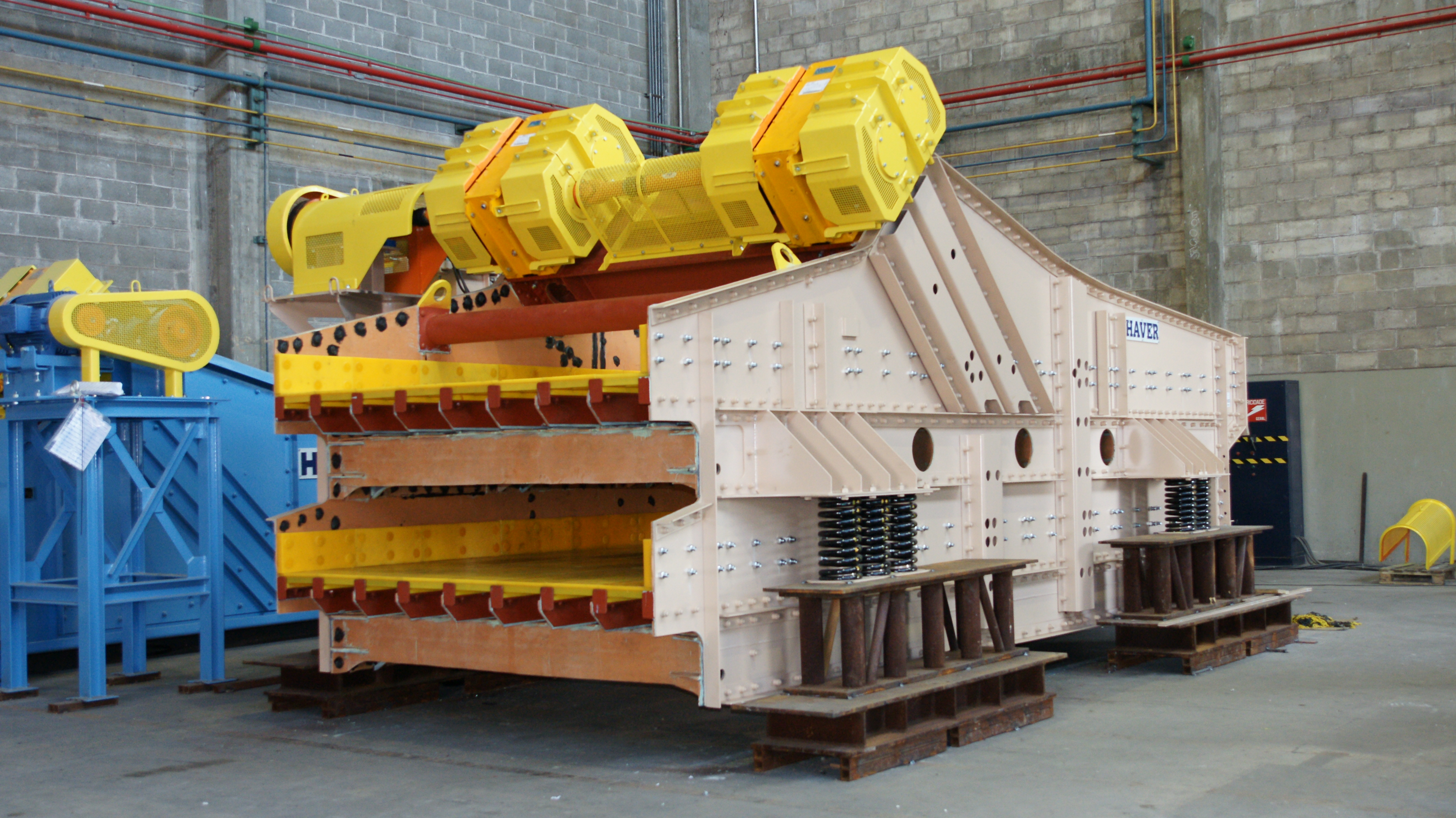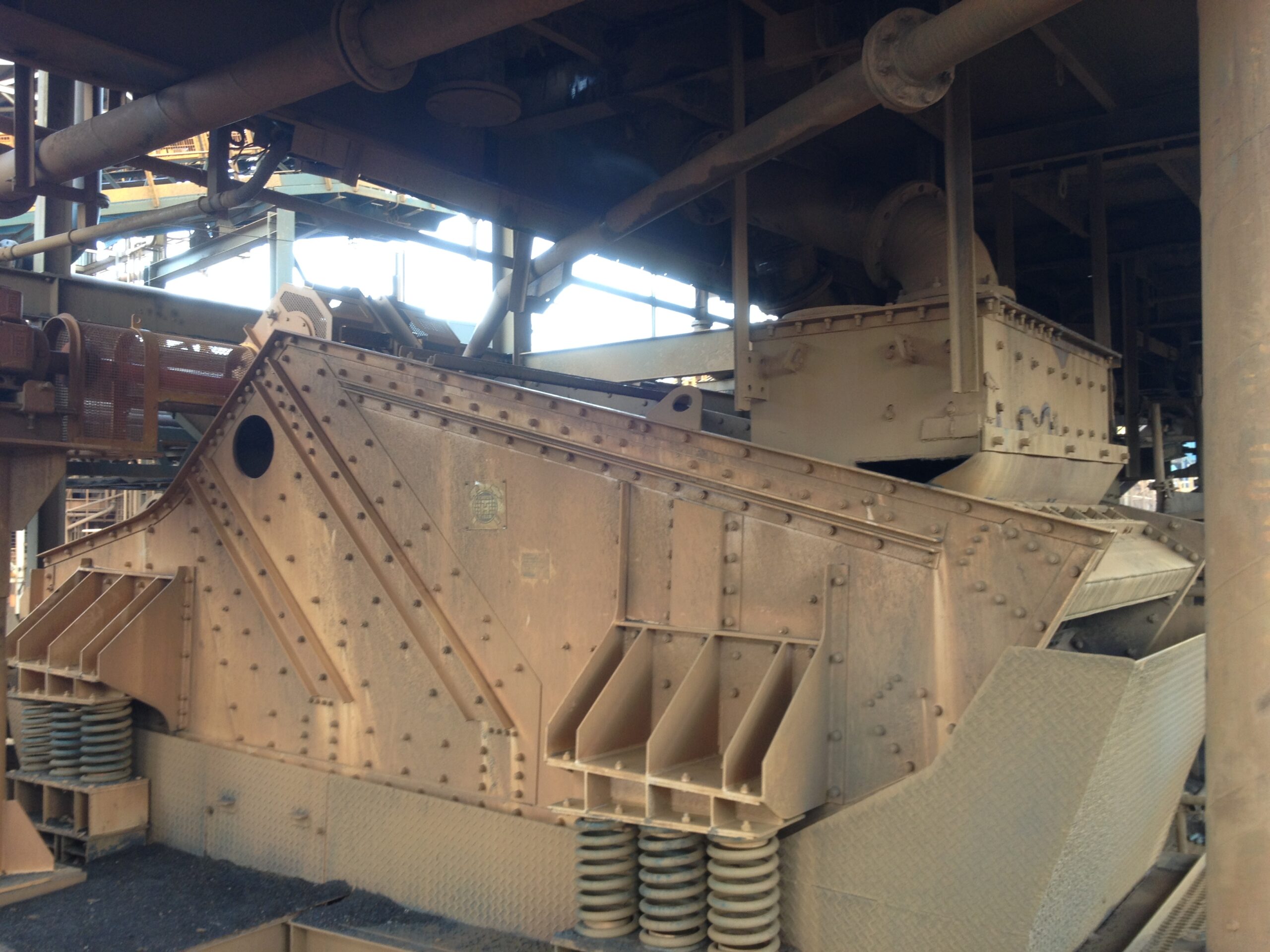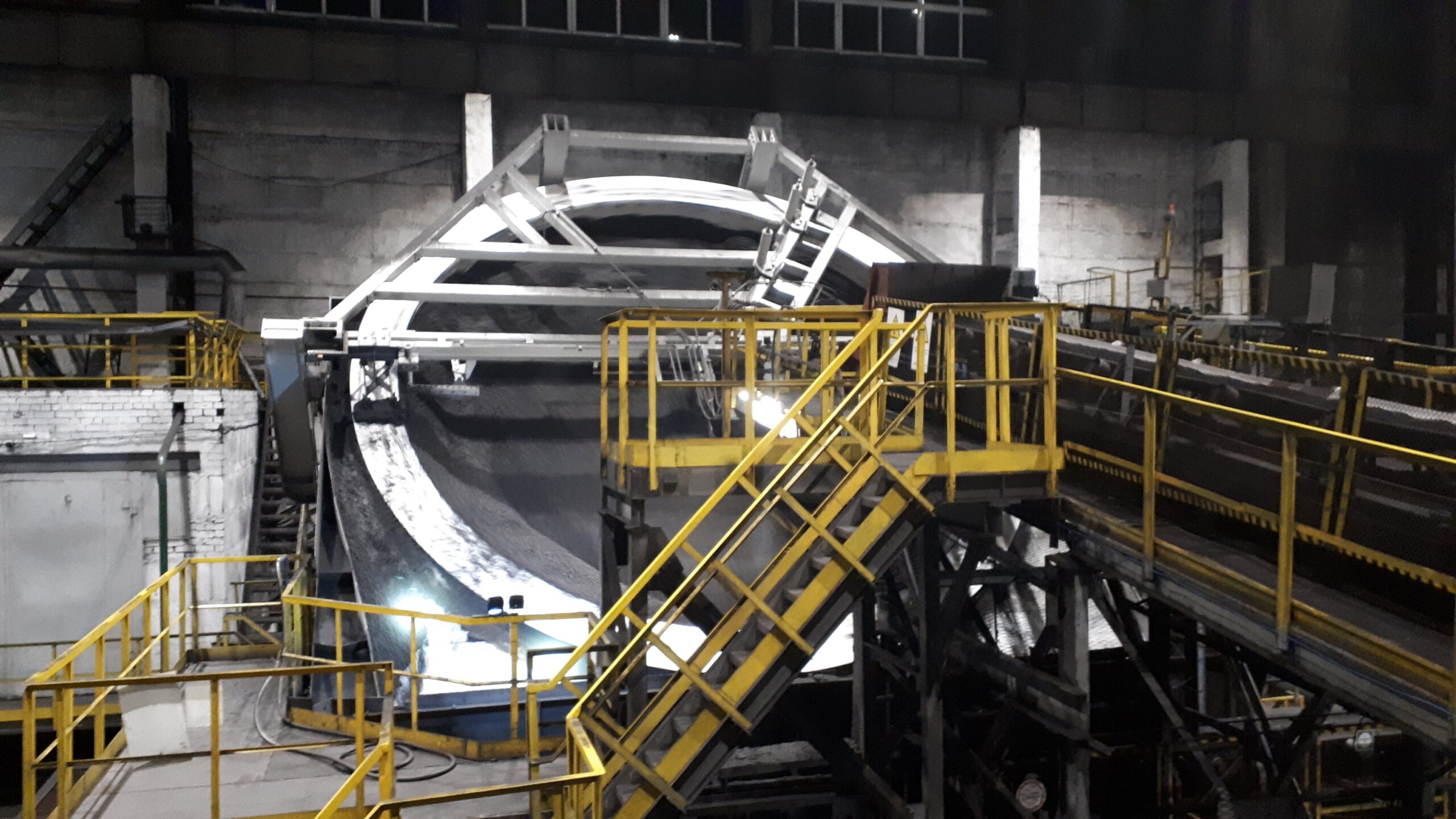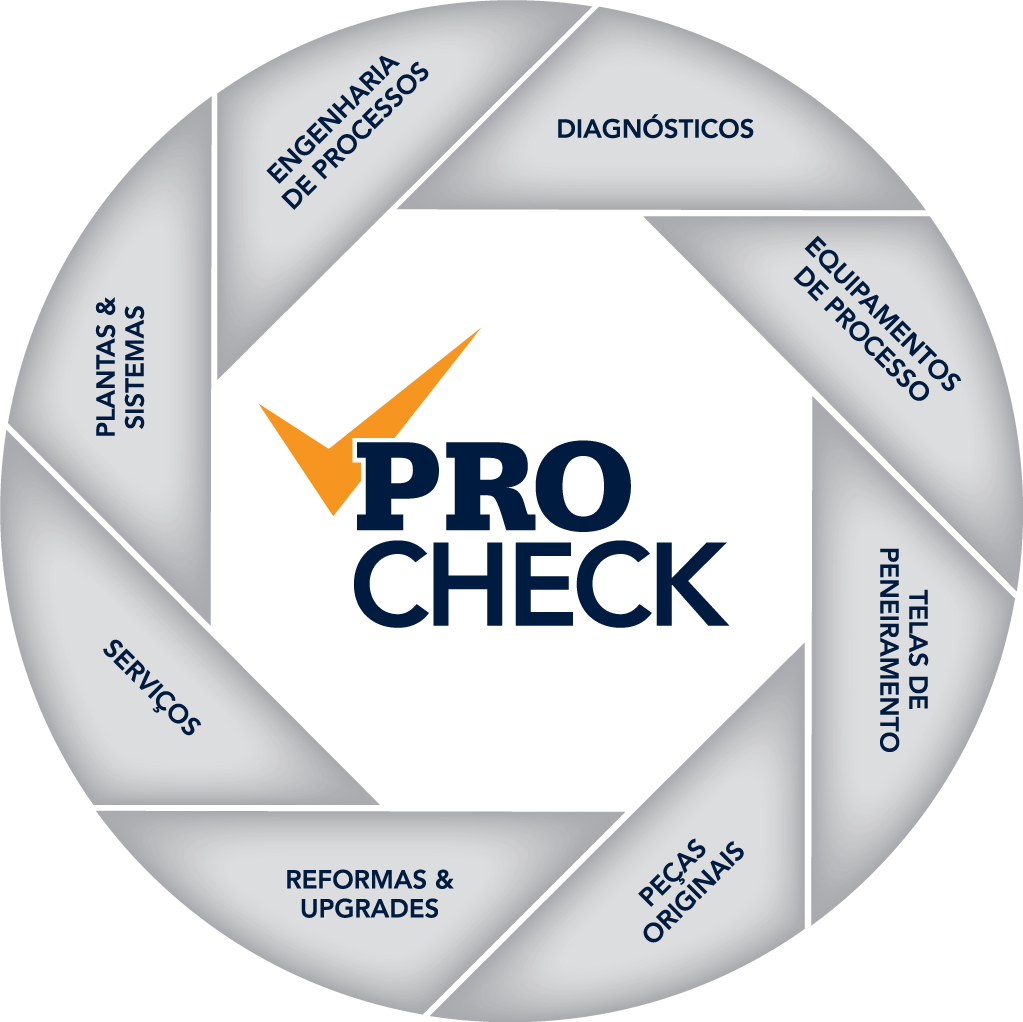
High Capacity screen that is reducing the customers costs
In this project, we developed a processing plant with the high capacity eccentric screen XL-Class ME 2400 x 7000 with material loading and unloading stations for iron ore and Fe-pellets production.
An XL-Class of this size can handle capacities of 2 000 TPH and bulk densities of 2.2 t/m3. The vibrating screen aids in producing high-quality acid pellets with low levels of alumina and phosphorus, as well as high magnesium oxide content. This chemical composition assists in the production of value-added steel products at reduced costs. Contact us to learn more!
Technical Data:

Niagara vibrating screens support iron ore producer to screen more than 90 million tons of iron ore annually
In 2020, around 280 million tons of iron ore were produced globally. That is enough to make the steel for more than 3,300 Sydney Harbor Bridges. We’re proud to have been a part of this process. We designed this impressive iron ore screening plant to produce around 90 million tons of iron ore annually. The Niagara F-Class 2440×9760 (8`x32`) vibrating screens and Niagara XL-CLASS 12’x28’ for the primary screening (cutting in 90 mm) pictured are in operation today, and efficiently process the cut sizes of 40 and 19 mm. The plant increases production capacity and allows better viability of lower purity ores by homogenization with those of higher purity. Typically, the ores are blended in storage yards, lowering Capex and Opex investments, and simplifying the process of obtaining an environmental licensing easier. Looking to advance your operation’s processing technology? Message us and we will partner with you to develop the best custom solution to meet your needs.
Technically Details:
• Equipment: Niagara F-Class 2440×9760 (8`x32`) & Niagara XL-CLASS 12’x28’
• Capacity: 90 million tons of iron ore annually
• Cut sizes: 40 and 19 mm

New, elliptical movement Niagara XL-Class Vibrating Screen for High-Moisture Applications
Haver & Boecker Niagara has engineered a new, elliptical motion Niagara XL-Class vibrating screen for a Brazilian iron ore producer. The new technology is ideal for screening applications challenged with high-moisture content and can easily handle capacities up to 3,500 tons per hour while minimizing water usage. The XL-Class runs in an elliptical motion of up to 6g in a high-moisture iron ore screening application to ensure stratification in all phases of screening. The new vibrating screen also features a robust elliptical exciter drive that offers a bearing life up to 75,000 hours. The elliptical movement motion and increased acceleration of the XL-Class ensures that the material is stratifying without blinding or contamination. Each elliptical XL-Class machine is custom-designed to the operation’s specific application using Finite Element Analysis (FEA), which measures high stress areas and natural frequencies of a vibrating screen. Operations can pair the elliptical XL-Class with the with the company’s signature Ty-Deck Ultra modular screen media to maximize the screening efficiency of high-moisture material and address its challenges.
Technical Data:

13 Niagara wet vibrating screens support iron ore producer to improve his performance
We are glad to supply 13 machines for iron ore classifying project. The wet vibrating screens are fed by belt feeders and receive the new feed from the homogenization yard plus the product of quaternary crushing. Each screen is fed by 500 t/h of iron ore and works with two decks: the first one with polyurethane media with 8mm opening and second one with polyurethane media of 1.4 mm opening. The two decks are equipped with water spraying nozzles to wash the material. The fractions (+8 mm) feed the quaternary crusher, the fraction retained in the second deck (-8 +1.4 mm) feed the jig circuit. The passing fractions on the second deck (-1.4 mm) are part of the sorting cyclone feed. Sounds interesting? Contact us to learn more!
Technically Details:

Supply of six modular Niagara XL-Class banana vibrating screens for iron ore processing
—————
A Brazilian iron ore producer has purchased six modular Niagara XL-Class banana vibrating screens for its iron ore processing plant. The 12- by 32-foot, exciter-driven vibrating screens were specifically designed to process 900 tonnes per hour of natural moisture content with a goal of classifying material 100% below 19 mm.
Each machine is equipped with our signature Niagara Exciters and Tyler Engineered Media to ensure optimum screening efficiency and equipment reliability. Additionally, the dynamic condition of our XL-Class screening technology can be adjusted to reach the operation’s unique applicational requirements, including acceleration, amplitude and speed. The advanced design of our Niagara screening technology helps producers efficiently classify materials without water, aiding in the reduction of tailing dams. Contact us to learn more!

Niagara vibrating screen support iron ore producer to reach the feed capacity of 250 tph
The vibrating screen has the function to dewater the material from wet high-intensity magnetic concentration and wet medium-intensity magnetic concentration underflow. The dewatering screen has a feed capacity of 250 t/h and polyurethane media of 0.3×12.7mm opening. The material is fed onto the screen with 40% of H2O and is desired to have a retained material with 15% moisture as maximum with a discharge bed layer around 200 mm.
Technically Details:

HAVER & BOECKER NIAGARA delivered Iron Ore Pelletizing Plant CONSISTING OF 15 PELLETIZING DISCS in Ukraine that are Supporting the Process of Direct Reduction
The iron ore and steelmaking industries have an important responsibility to reduce carbon dioxide and hazardous atmospheric emissions. The transformation of iron ore into steel requires several process stages. Firstly, we need to become H2 and iron ore pellets. Iron ore pellets are produced from iron ore concentrate through pelletizing and sintering. To enrich the iron ore, it is necessary to reduce the ore to the flotation fineness and to feed it to sorting processes, such as magnetic separation and flotation. From there, the resulting iron ore concentrate is pelletized with binders, such as bentonite, which require more energy for reduction and melting because of their SiO2 content.
Herewith we developed our pelletizing disc the Niagara Scarabaeus to replaces bentonite binders with organic ones, such as carboxymethyl cellulose and polyacrylamide — saving energy and improving product quality. The pelletizing disc fulfills the specification needs for the processes of direct reduction and saves up to 5% energy by reduced recycling rate. The production capacity can be up to 150 t/h.
Those characteristics convinced experts from Eastern Europe in the potential of our innovative pelletizing technology for the production of iron ore pellets with a very narrow particle size distribution (10 to 12,5 mm) and high product rate (up to 70 %). They purchased 15 pelletizing disc for their production facility. Аfter conducting iron ore tests in Haver Engineering in Freiburg and proving the possibility of achieving the desired parameters, a contract for the supply of the necessary equipment was signed. In order to satisfy the higher needs of the pellets, an automatic pelletizing disc control system was introduced for the first time, incorporating three machine parameters: rotation speed, tilt angle, and board height.
This project has given the start in our investigations in the green steel: “It is the direct iron ore reduction process, enabled by those uniform size pellets, which finally leads to the tremendous reduction in greenhouse gases. This innovative pellet-based solution avoids the traditional blast furnace route and, consequently, the energy intensive smelting of the ore. It also ensures the production of 97% pure iron at the end. This is such a great contribution to protect our climate through technology innovation.”
Technical data:
Advantages:
Find out more: https://haverniagara.de/pelletizing/
Pelletizing Live Event: https://youtu.be/w7rHlZJv6QI
Request now
PROcheck combines our exclusive Pulse Vibration Analysis software with a complete machine inspection and screen media audit to increase your production and reduce unscheduled downtime.
 How it Works
How it Works
Our global network of experience allows us to solve the most unique problems.
Florian Festge, Haver & Boecker Managing Partner